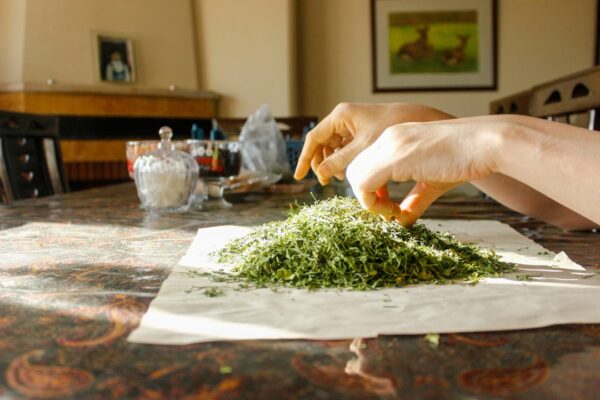Why Germination Matters: How to Germinate Cannabis Seeds and Start Right
Learning how to germinate cannabis seeds is the essential first step for any grower. Whether you’re exploring sustainable gardening with your family, setting off on an off-grid adventure, or just beginning your cultivation journey, germination sets the tone for your plant’s success. In cannabis-friendly regions like Oregon’s Rogue Valley or British Columbia’s rural communities, locals treat seed starting not just as a method but a tradition passed through generations.
In this guide, you’ll discover practical, beginner-friendly ways to germinate cannabis seeds—from tried-and-true methods to surprising pro tips borrowed from growers across North America. Whether you’re starting in a cabin in New Mexico or on the road in a van through Northern California, trusted techniques await you below.
Understanding Cannabis Seeds: Know Before You Grow
Before germination begins, it’s helpful to recognize your seed type. Cannabis seeds fall into three main categories:
- Feminized: Guaranteed to produce flower-yielding female plants.
- Regular: Includes male and female seeds, good for breeding but less predictable.
- Autoflowering: These bloom based on age, not light cycles, making them ideal for simple grows.
Buy from reputable seed banks or local dispensaries. In Boulder, Colorado, or Ashland, Oregon, boutique shops offer regional-specific strains. The Humboldt Seed Company is trusted in the Pacific Northwest, while Seed Bank International caters to growers in drier southwestern climates.
Choose seeds with a firm, dry outer shell. Avoid soft, cracked, or discolored seeds. Healthy seeds significantly increase your success rate when working to germinate cannabis seeds, so take the time to source wisely.
Top Methods to Germinate Cannabis Seeds Successfully
No single method fits every grower, but these proven techniques work across climates and experience levels. Whether you’re in the desert or the mountains, one of these will suit your setup.
1. The Paper Towel Method
This classic method remains a favorite due to its simplicity and effectiveness:
- Moisten two undyed paper towels using distilled water.
- Place your seeds between them on a ceramic or glass plate.
- Cover with another plate for darkness and moisture retention.
- Keep in a warm area (70–85°F), such as a cupboard or near a vent.
- Check daily—roots typically emerge within 1–7 days.
Tip: Oregon cultivators suggest adding a drop of kelp or mycorrhizae to promote strong early growth.
2. Direct Soil Method
This natural approach works well for families or eco-conscious growers favoring a low-intervention style. Ideal for spring gardens in climates like Mendocino or Vermont.
- Use a seed-starting mix like FoxFarm’s Light Warrior—not general potting soil.
- Plant seeds about ¼ inch deep in pre-moistened soil.
- Cover with plastic wrap to retain humidity if needed.
- Keep temperatures consistent and soil lightly damp.
Great for teaching kids about plant cycles or embracing organic growing practices.
3. Water Glass Method
Perfect for growers on the move, this method helps determine viability fast:
- Drop seeds into a glass of distilled water for up to 48 hours.
- Viable seeds will sink and show taproots within 12–36 hours.
- Transfer sprouted seeds immediately to soil or paper towel.
Popular in humid areas like the Mississippi Delta, this method pairs well with greenhouse or hydroponic systems.
Creating the Optimal Germination Environment
To successfully germinate cannabis seeds, recreate the essential conditions of nature with just the right balance of warmth and moisture.
- Temperature: Maintain a stable 70–85°F. Seedling heat mats are useful in cold areas like Mount Shasta or Telluride.
- Humidity: Aim for 70–90% to soften seed shells effectively.
- Lighting: Seeds don’t need light initially, but keep a grow lamp or sunny spot ready for sprouts.
Gardeners in British Columbia’s Okanagan Valley often rely on humidity domes with bottom heat to handle unpredictable spring weather. In Vermont, families incorporate this phase into seasonal homeschool lessons for hands-on plant science education.
How to Transplant Germinated Cannabis Seeds
Once your seed shows a ½-inch taproot, it’s ready to move into soil. Gently handle sprouted seeds to avoid damaging the fragile root. Use sanitized tweezers or gloved fingers, and plant the root tip down into pre-moistened soil.
Many eco-travelers in Canada and Baja California recommend using biodegradable pots to minimize transplant shock and support overall soil health. These small pots can be transferred directly into the ground later.
After planting, avoid direct sunlight for the first few days. Instead, use soft, indirect light. Gradually harden off seedlings to outdoor conditions over a 5–7 day period—replicating how heritage farmers in Humboldt prepare young plants.
Common Germination Problems and How to Fix Them
Sometimes, even if you’re careful, things go awry. Here are common issues and quick solutions:
- Too much water: Seeds in overly soaked conditions often rot. Keep the medium moist but not wet.
- Aging seeds: Older or improperly stored seeds may not crack. Get seeds from reputable vendors, especially outside of festivals or pop-ups.
- Temperature instability: In places like the Rockies or deserts, fluctuating highs and lows can halt progress. Use insulated boxes or ceramic tiles to stabilize warmth.
Pro tip from Arizona desert growers: Place the germination setup on a thick ceramic tile. It stores daytime heat and releases it at night, moderating temperature swings naturally.
Cannabis Cultivation Destinations Worth Visiting
Want to combine learning and travel? These regions welcome growers of all levels and offer hands-on opportunities to germinate cannabis seeds while exploring culture and sustainability:
- Southern Oregon: Farms like Sungrown Greenhouse offer workshops and nature excursions near the Siskiyou mountains.
- Humboldt County, California: Visit family farms that share their heritage growing practices, from germination to harvest.
- British Columbia: Experience education-based cannabis co-ops in the Kootenays offering immersive stays for eco-conscious families.
These experiences create meaningful connections between plant cultivation and the land—whether you’re road-tripping or building your garden at home.
Final Word: Sprout New Beginnings with Cannabis Seeds
To germinate cannabis seeds is to witness the quiet magic of life breaking through. Do it with intention, patience, and curiosity, whether you’re solo in the wilderness or teaching your children the rhythms of nature. With the right seeds, care, and environment, a tiny taproot marks the beginning of something incredible—be it a harvest, a hobby, or a personal journey into cultivation culture.






